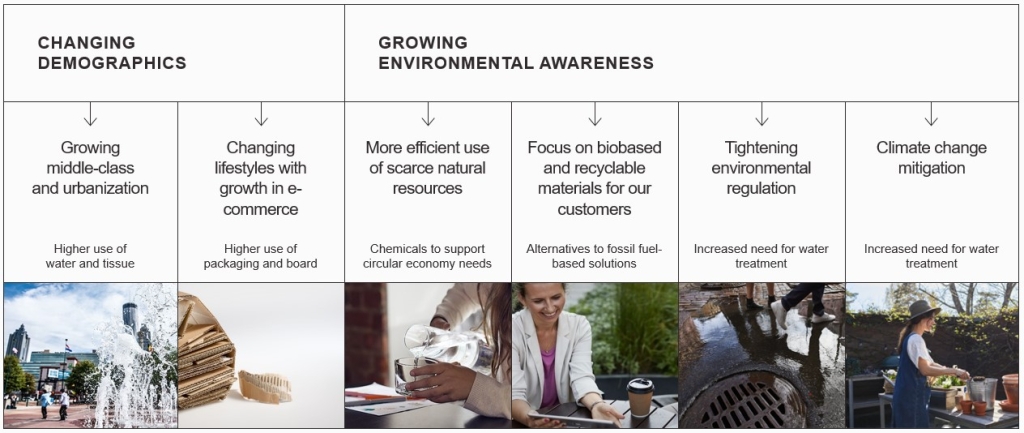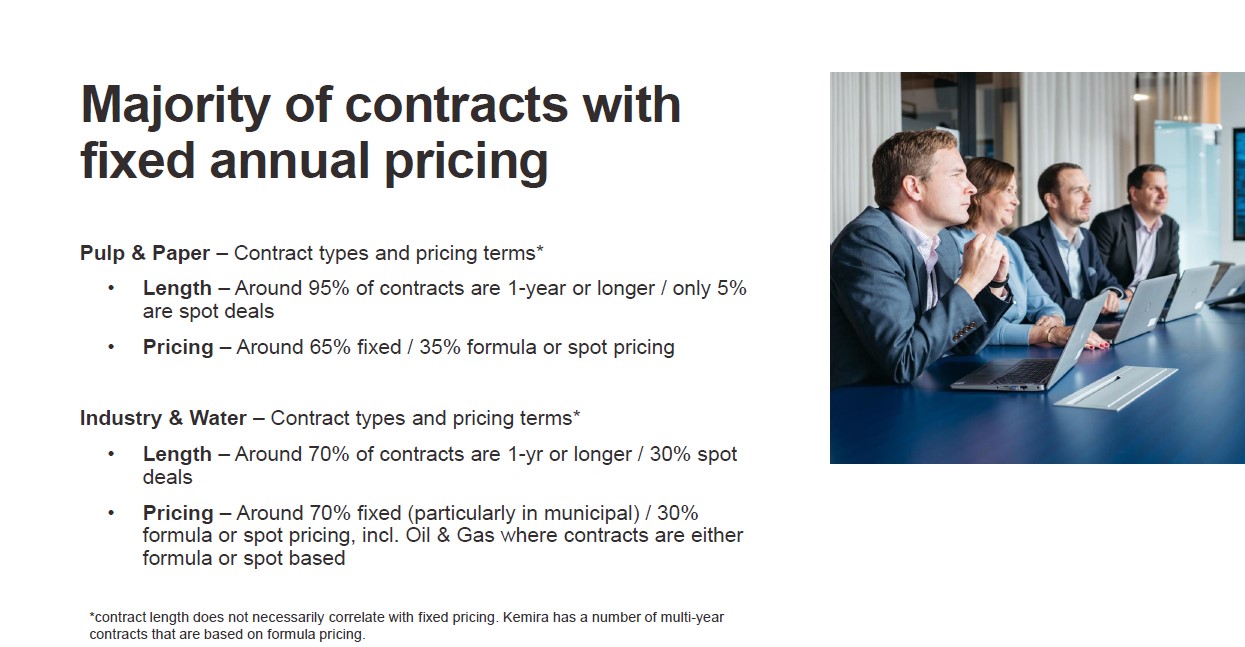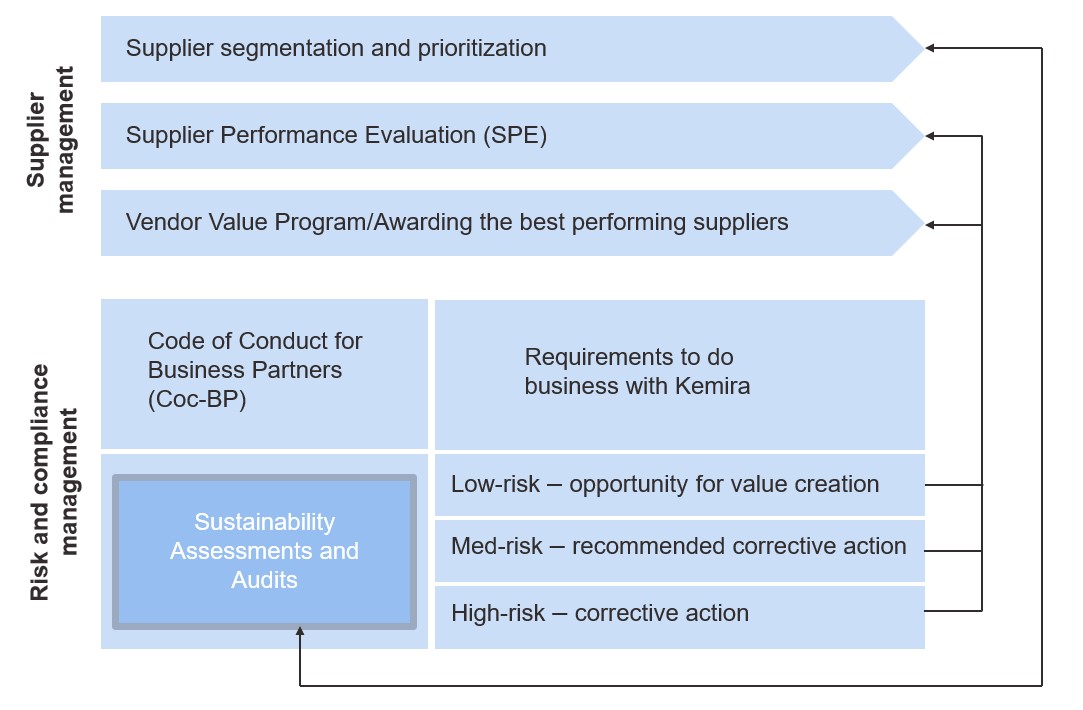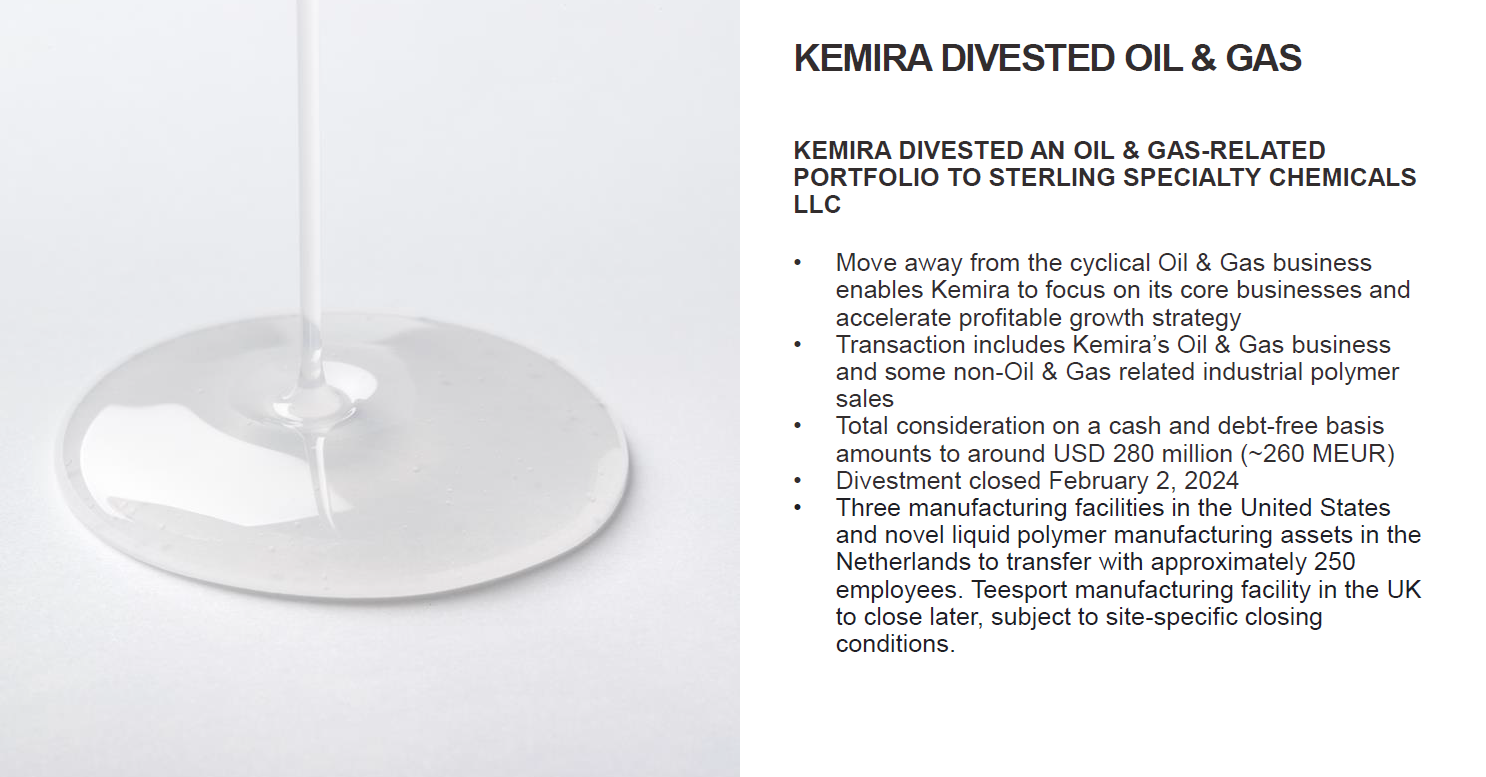What is Kemira’s vision and strategy?
Kemira is a global leader in sustainable chemical solutions for water-intensive industries. Our customers include industrial and municipal water treatment operators, and pulp & paper industry among others. We provide the best-suited products and services to improve our customers’ product quality, process, and resource efficiency.
Our vision is to be the first choice in chemistry for water intensive industries. Sustainability transformation is driving profitable growth, and our aim to double the revenue in water in the long run. In addition, by the end of 2030 over 500 million of our revenue is targeted to come from the renewable solutions portfolio.
Our long-term financial goals are:
- Average annual organic growth over 4%
- Operative EBITDA margin of 18–21%
- Operative ROCE over 16%
Read more about Kemira’s strategy.
What drives growth in Kemira’s markets?
The two most important global megatrends driving growth of Kemira’s end markets are changing demographics and growing environmental awareness, which is further resulting in tightening regulation.
Changing demographics
A growing middle-class population, particularly in Asia-Pacific, is expected to result in higher use of water, which will ultimately drive the demand for water treatment chemicals. Changing lifestyles and growth in e-commerce, partly driven by higher income per capita, will lead to higher need for packaging solutions globally. This will further boost the demand for pulp and paper chemicals; Kemira’s core expertise.
Growing environmental awareness
The overall sustainability trend, including more efficient use of natural resources and higher need for recyclable products is expected to be beneficial for Kemira’s end-markets. Kemira’s solutions enable its customers to use resources, water included, more efficiently. One particular trend, the replacement of plastic packaging, is expected to drive growth of fiber-based packaging solutions. This in turn is expected to increase the demand for pulp and paper chemicals. In addition, the tightening regulation supports Kemira’s ambition to double its water treatment business.









